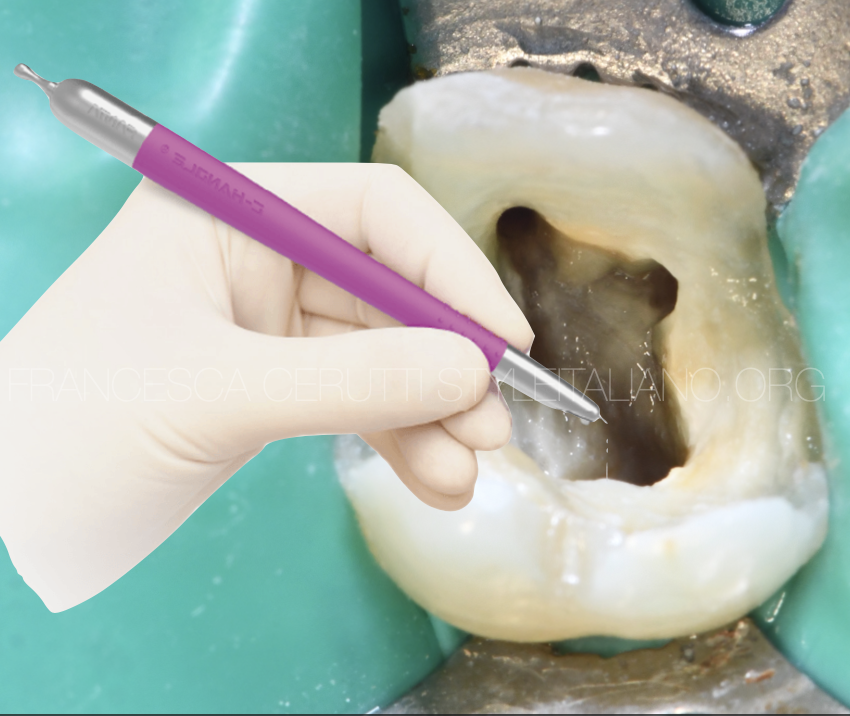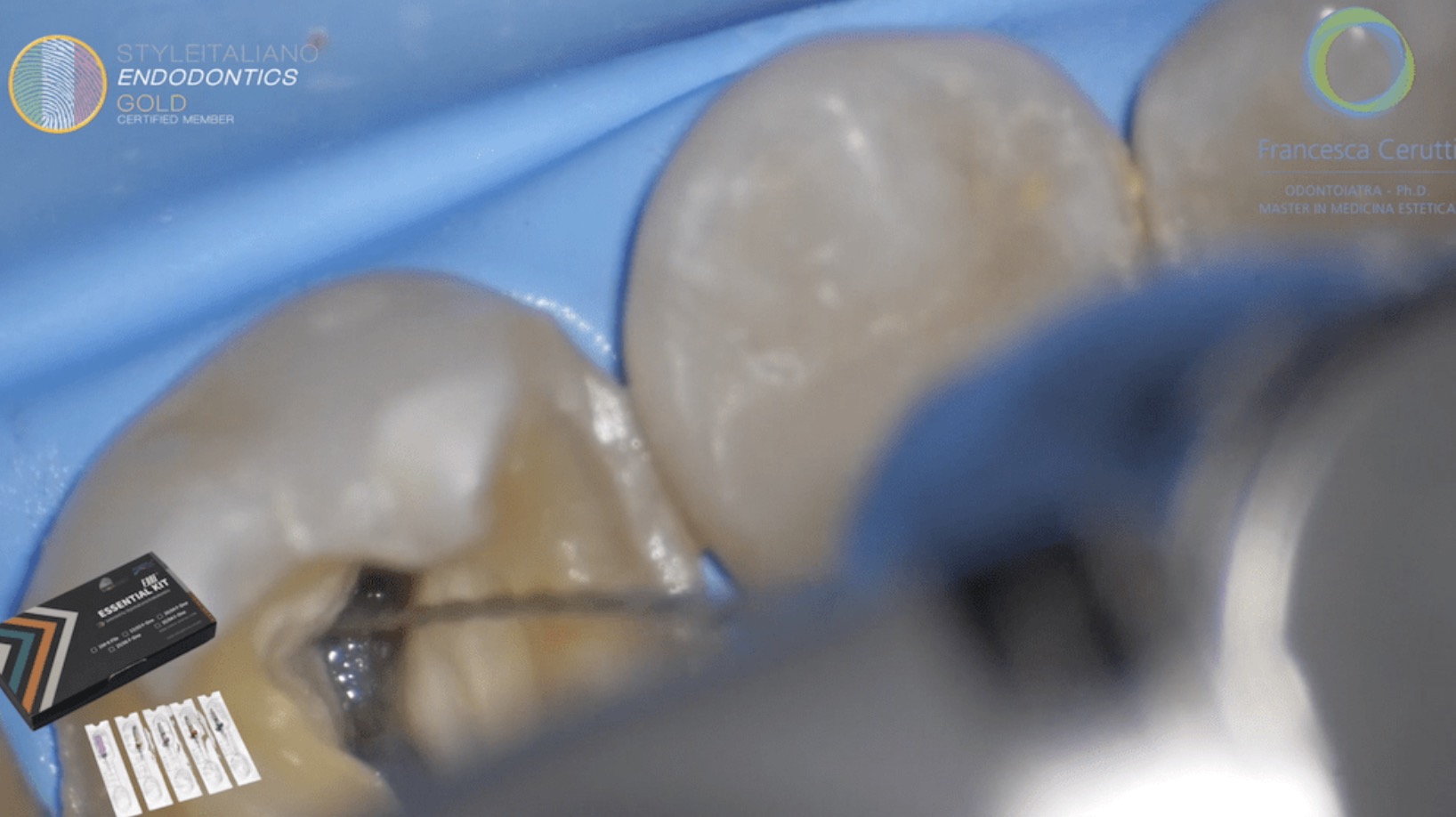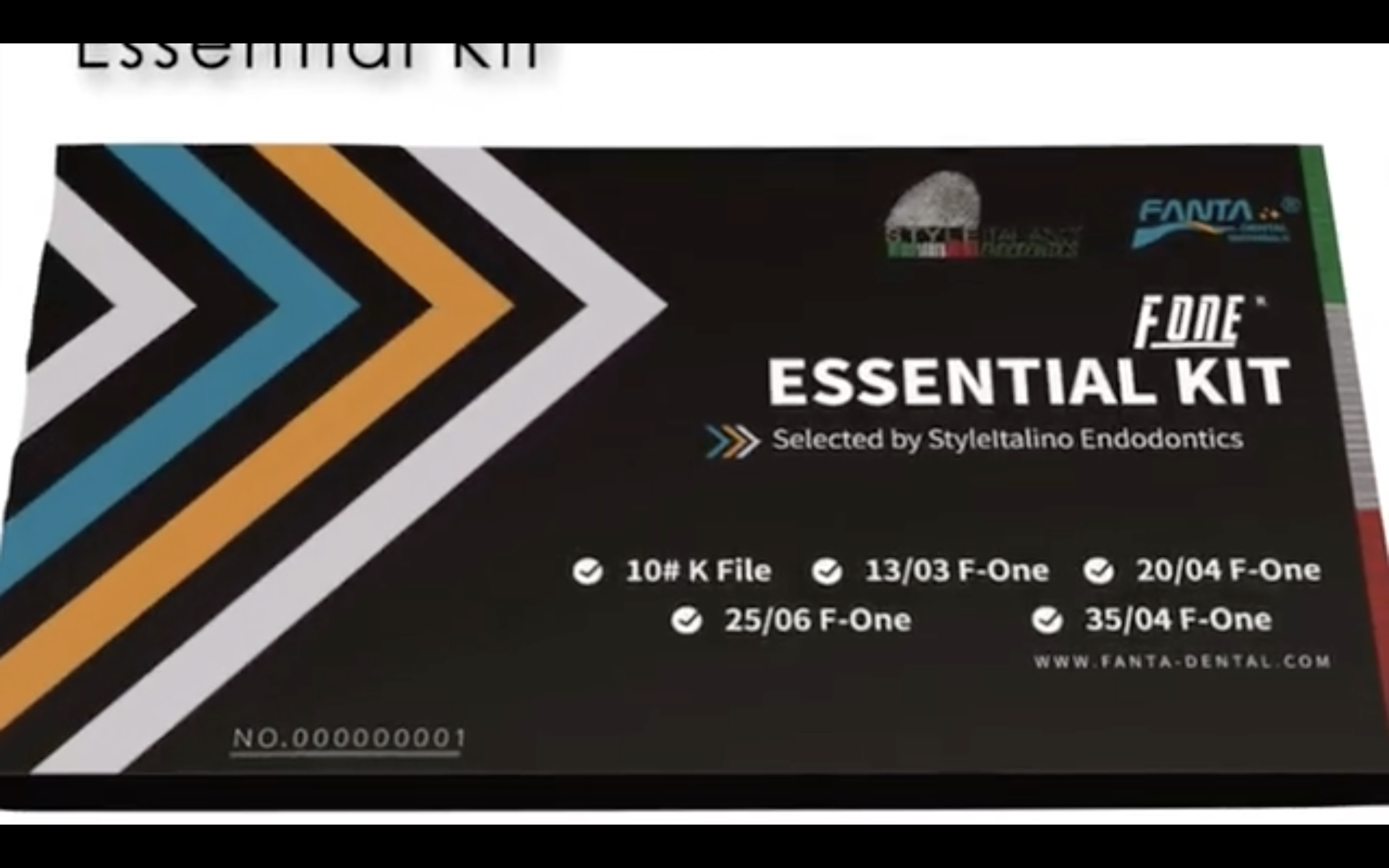
Use of C-Handle in daily practice
24/10/2022
Francesca Cerutti
Warning: Undefined variable $post in /var/www/vhosts/styleitaliano-endodontics.org/endodontics.styleitaliano.org/wp-content/plugins/oxygen/component-framework/components/classes/code-block.class.php(133) : eval()'d code on line 2
Warning: Attempt to read property "ID" on null in /var/www/vhosts/styleitaliano-endodontics.org/endodontics.styleitaliano.org/wp-content/plugins/oxygen/component-framework/components/classes/code-block.class.php(133) : eval()'d code on line 2
Having an optimal view of the operative field is one of the most obvious, but at the same times most important, aspects to keep into consideration while doing an endodontic treatment.
The use of rubber dam and magnifications certainly give us an advantage, together with a correct access cavity, but often, when the clinical situation is difficult the operator can adopt awkward working positions, increasing the risk of getting musculoskeletal disorders. Endodontists have been found to adopt poor neck postures for long periods (~1 h per case) during treatment.Being in the forward‐head posture and bending their neck for a long period increases stress and strain on the musculoskeletal structures in the neck, which leads to ischemia and neck pain.
What really is challenging is to maintain an optimal view when the operative field is small, such as in patients with small mouth or limited openings. Sometimes the case can be solved by reducing the size of the instruments we are using, for example switching to small mirrors, small head handpieces and short NiTi files. In some other cases we are in the situation in which we need to choose among seeing what we are doing and actually do it. In these cases the use of tools that allow us working without taking too much space can be a lifesaver.
FANTA Dental introduced a product called C-Handle specifically designed to manage the above mentioned cases. C-Handle is a new designed grip attachment for Endodontic manual instruments, to simplify scouting the canals in the most distal teeth and in limited mouth opening, where accessibility is difficult.
C-Handle is compatible with Endodontic manual instruments (K files, C files). It is quick and easy to assemble, as shown in the video.
Other interesting features of this product are the long handle design, allowing unobstructed visual access, and the frosted design aiming for non-slippery and comfortable “pen-grasping” sense of touch.
The distal end notch design and high internal conductivity allow C-Handle to be used with Apex Locators, making it an interesting tool also to record the working length in posterior teeth.
The first use of C-Handle one can do is to hold k-files while doing the scouting in molars, above all in patients with limited mouth opening.
In this case the long handle allows seeing all the root canal openings while working with the file for the scouting phase. The conductivity of the handle makes it possible to use it with the apex locator.
The difference in visibility between using C-Handle and delivering the file with hands is evident.
Another case in which C-Handle can be useful is in finding the root canal opening in traumatized or calcified teeth, regardless of their position into the mouth.
In this case an upper central incisor with periodontal problems was treated and a small .06 K-file mounted on C-Handle was used to find the root canal opening and to scout the root canal up to .10. The possibility of having the manual file mounted on a long handle allowed having a superior visibility of the operative field without losing much of the tactile sensation given by the tip of the file entering into the root canal opening.
The tooth was then shaped with the Style Italiano Endodontics selection of AF F One files and filled with the bioceramic sealer and single cone technique.
One last case in which I found extremely useful having C-Handle was the treatment of the lower right second premolar shown of a patient with temporomandibular joint disorder.
The patient had an irreversible pulpitis, she recevied an emergency pulpotomy from a colleague and then she was referred to me to finish the endodontic treatment.
For her it was extremely difficult to maintain a good mouth opening during the treatment, so the possibility of having a long handle made the scouting phase easier.
The tooth was then shaped with AF F One Files and filled with the bioconeless technique.
Conclusions
Having the possibility to use dedicated tools to hold endodontic files can be a good advantage in terms of ergonomic, because it allows having a better vision of what one is doing, reducing the stress during the treatment and preventing musculoskeletal disorders.
Bibliography
Karapinar-Kazandag M, Basrani BR, Friedman S. The operating microscope enhances detection and negotiation of accessory mesial canals in mandibular molars. J Endod. 2010;36(8):1289-94.
Kiefner P, Connert T, ElAyouti A, Weiger R. Treatment of calcified root canals in elderly people: a clinical study about the accessibility, the time needed and the outcome with a three-year follow-up. Gerodontology. 2017;34(2):164-70.
Krapež J, Fidler A. Location and dimensions of access cavity in permanent incisors, canines, and premolars. Journal of conservative dentistry : JCD. 2013;16(5):404-7.
Mohammadi Z, Asgary S, Shalavi S, P VA. A Clinical Update on the Different Methods to Decrease the Occurrence of Missed Root Canals. Iranian endodontic journal. 2016;11(3):208-13.
Adulyawat W, Chokechanachaisakul U, Janwantanakul P. Poor neck posture and longer working duration during root canal treatment correlated with increased neck discomfort in dentists with <5-years' experience in endodontics. J Occup Health. 2022 Jan;64(1):e12362. doi: 10.1002/1348-9585.12362. PMID: 36125183; PMCID: PMC9487186.




